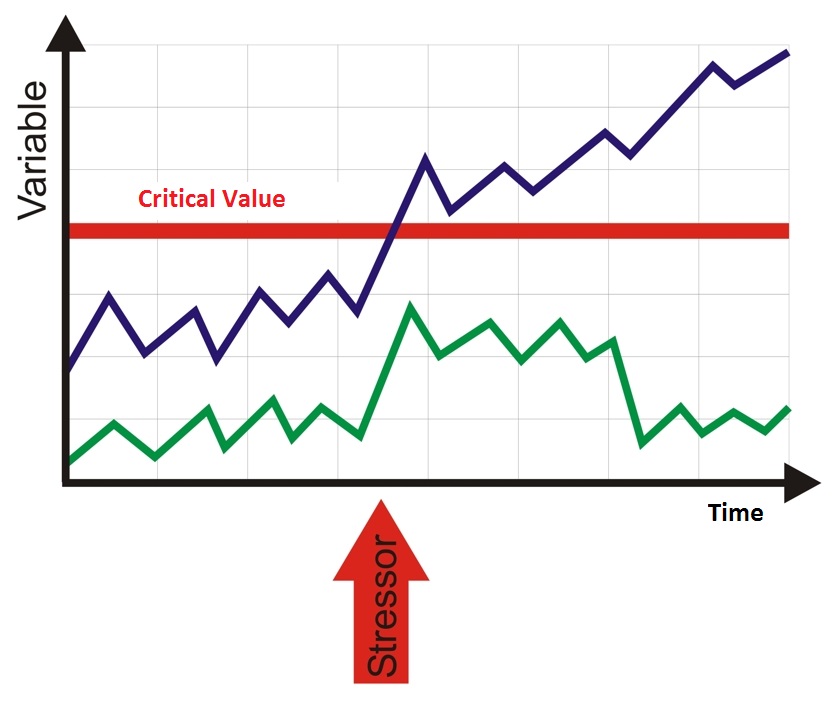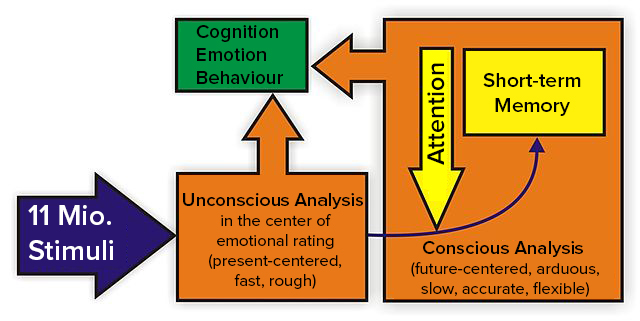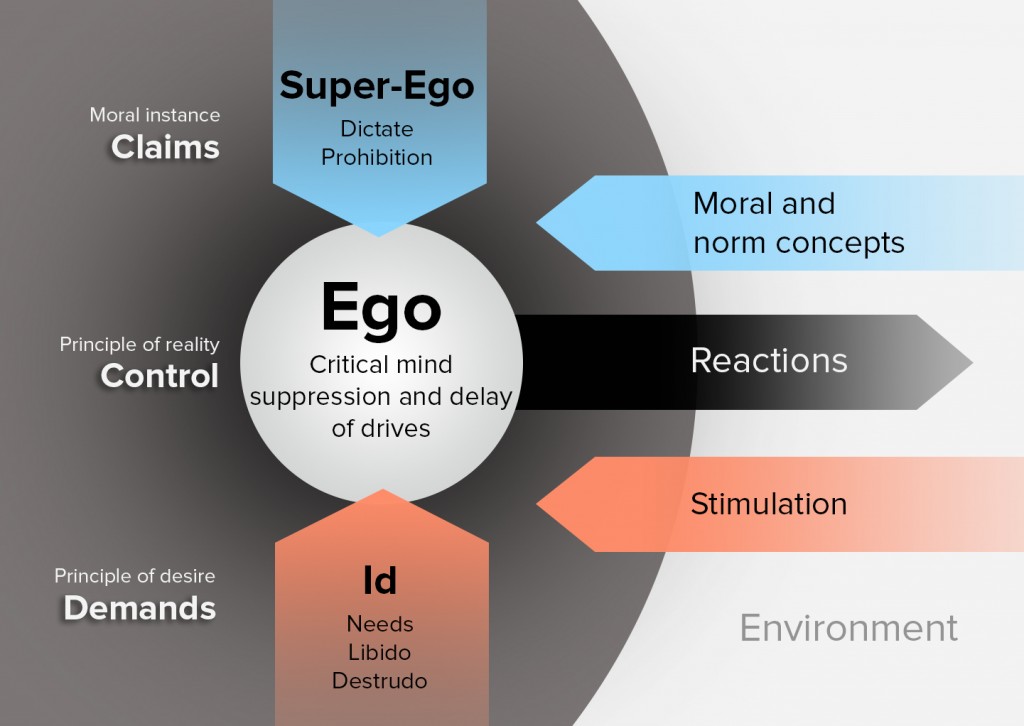Important Groups of Health and Disease Models in Medicine
In Lecturio :) . As a physician, you could not work without models in medicine: The consequences would be chaos, randomness, and a lack of structure. On the other hand, one should not fixate on just one model in order to prevent a limited diagnostic and therapeutic spectrum. An old medical rule says: Anything helpful should be considered. Below, we are summarizing the five most important groups of models at a glance: behavioral models, bios-psychological models, the psychodynamic model, social-psychological models, and sociological models. With this, you will be perfectly prepared for exams and the preliminary examination.
Table of Contents
Are you more of a visual learner? Check out our online video lectures and start your psychology and sociology course now for free!
Photo by rawpixel on Unsplash
Function of Disease Models
A disease model is characterized by the commonly accepted view of disease and creates a feeling of belonging to a group (think of the various medical specialities). The perception and the organization of actions in the daily practice routine are structured by disease models. Depending on which model becomes the focal point, facts are considered from different angles. The doctor focuses on the dysfunction or defect within the patient through the use of problem solving techniques. Medical history of the patient, physical examination as well as diagnostic test are used to form the basis for the identification and treatment of a diseases.
Hypotheses are structuring drafts, no factual knowledge!
Behavioral Models
Our behavior mainly depends on our learning and thinking processes, even if we feel uncomfortable and sick. In the behavioral analysis, five condition dimensions are considered that can explain many human behavior patterns.The SORKC model: Behavior-analytic model according to Kanfer (1976)
The SORKC model contains five important condition dimensions, explaining a variety of human behavior patterns/disorders.- S: Stimuli like trigger irritants or situations.
- O: Organism variables: innate dispositions, biological characteristics, preexisting injury.
- R: Reactions are forms of exhibited behavior.
- K: Contingencies provide information about the relationship between R and K.
- C: Consequences are amplifiers and demonstrate reactions to the behavior.

Image: “Sorkc” by OnkelDagobert. License: CC BY-SA 3.0
Conditioning: Classical and operant
Where does a symptom come from and what is its purpose? Of particular importance are the amplifiers that maintain a symptom and can contribute to its chronification. This aims at creating a difference between voluntary and involuntary behavior. The following types of learning work together:- Classical conditioning: respondent learning, focuses on involuntary, as well as automatic behavior.
- Operant conditioning: learning through success, entails applying punishments or reinforcement after a behavior. Aims at weakening or strengthening voluntary behaviors.
Behavioral medicine
In behavioral medicine, relationships between disorders, behavior, and environment are analyzed interdisciplinary. You can reach your medical treatment goal by means that modify the behavior through patient training and biofeedback, for example.
Practice tip: The psychological and pedagogical contents and the training with regard to giving advice, educating and changing behaviour patterns in patients, unfortunately do not get enough attention during medical studies. The only “patient” who is seen during pre-clinical studies in classically structured courses is a dead body: the corpse in the dissecting room. Thus, do not consider the practical nursing training as a necessary evil to take care of during periods without lectures but rather spend as much time as possible on patient contact! Later on you will no longer be able to observe, learn, and communicate as much without time pressure and responsibility.
Biopsychological Models

Image: “Vulnerabilitäts-Stress-Modell (Diathese-Stress-Modell).” by OnkelDagobert. License: CC BY-SA 3.0
In conjunction with emotion, stress, and disease you should memorize the following terms very well:

Image: “Stark vereinfachtes Modell der menschlichen Informationsverarbeitung” by OnkelDagobert. License: CC BY-SA 3.0
Psychodynamic Models
In psychodynamics, one is to assume the following basic supposition: The human being is mainly directed by desires, impulses, and motives that are not accessible by one’s consciousness. The psychodynamic model considers these unconscious conflicts as the cause for the development of disease. This model is based on the theory of Sigmund Freud’s psychoanalysis.The model focuses on human functioning based on the interaction of forces as well as the drive within a person.
Assumption of the model:
The assumption in this model is that:- The most vital force that shapes the human behavior operate at the unconscious level.
- Individual are not aware of the most vital motivation or their important conflicts and frustration.
- Anxiety generated by conflict may be disguised as defenses.
Structure of the human personality
- The conscious: All perceptions and thoughts of the moment.
- The pre-conscious: Memories and knowledge that can actively be transferred into the conscious at any time.
- The unconscious: The conscious has no access to this part and maintaince a resistance to its contents: repressed traumas, surpressed desires.
Structure of the human psyche
According to Freud, the human psyche is divided into three parts: id, ego and superego. The complex interaction between these three qualities is called psychodynamic.Id: The id has a physiological origin and exists since birth. It provides the energy for the fundamental immediate satisfaction of needs according to the “pleasure principle”: Food, water, excretion, warmth, attention, and sexuality. The main drivers are Eros, the life integrating force, especially libido and Thanatos, the death wish. These drivers or instinctual demands are called primary process.

Image: “Das Modell des psychischen Apparats nach Freud” by Rainer Zenz. License: CC BY-SA 3.0
Superego: The superego bears the moral rules of society, the “conscience”.
Defense Mechanisms Against Fear in the Psychoanalysis: Immune System of the Psyche
The id, ego, and superego are in almost constant contact with each other and thus inevitably create fear. For example, impulses of the id are often experienced as foreign or threatening and want to be repressed by the ego. The ego subconsciously creates defense mechanisms as protection against this fear.
Tip: The terms regarding defense mechanisms against fear are very important for exams and the preliminary examination, thus memorize them well and repeat them as often you can! Make their examples clear to yourself in order to facilitate understanding and increase your memory.
| Defense mechanism | Example |
| Identification: The counterpart to projection. Objects or parts of objects are introjected. The fear of panic triggering images is blocked by the identification with the aggressor. | Identification with the opponent who is rejected because of one’s own, unacknowledge weakness. |
| Introjection: Incorporation of external values into the ego structure so that those are no longer perceived as threat. | Motives, opinions, and behavior patterns are copied in order to be perceived better or to not be rejected. |
| Compensation: A desired characteristic trait is emphasized more in order to cover up weaknesses. | Low body height is compensated by extreme diligence. |
| Conversion: Transformation of a physical conflict into a physical symptom. | Palpitation, tremor, blushing because of shame. |
| Projection: Subconscious characteristics are transferred to other persons. | One’s own anger is not perceived while one’s counterpart is confronted with the question „Why are you so upset?“ |
| Rationalization: Excuses for one’s own behavior to oneself and others by using rational arguments. | One’s desire to be center stage and be noticed by being extravagant. This is justified with “Everyone only pays attention to superficial qualities anyway”. |
| Reaction formation: Menacing impulses are not accepted but the behavior turns into the opposite extreme instead. | Remain celibate instead of acting out sexual desires. |
| Reversion: Reversal of the opposite. | A fear triggering grandfather is shown as an ant in the child´s drawing. |
| Division: Emotional components are isolated from behavior, thoughts, and memories and seemingly accepted with indifference. | Objects or persons are uncoupled and either demonized or glorified. |
| Sublimation: Satisfaction and expression of unacceptable desires trough socially accepted or even highly rated needs. | Sexual driving force/energy is completely “invested” in an art project. |
| Undoing: Atonement for burdening actions and desires in order to neutralize them. | In many compulsive acts, i.e. obsessive washing after masturbation. |
| Repression (suppression): Preventing the invasion of undesired impulses, thoughts, and memories into the conscious. | Hatred toward one’s mother is not allowed (“you have to love your parents”). Contradictory actions are possible in dreams. |
| Transmission: Repressed emotions, expectations, and desires (usually from childhood) are transferred to new social relationships. | Expectations of the patient toward his mother are transferred to his physician. |
| Denial: Protection against threats by refusing to acknowledge them. | Pretending that nothing happened after experiencing trauma. |
| Substitution (Displacement): The satisfaction of needs is displaced from the unreachable object that cannot be confronted to another (mostly hostile emotions towards the object). | A child is opressed and abused by an older brother. Now, in turn, the child himself opresses and abuses weaker ones. |
| Turn against the self: aggressive impulses are directed against oneself. | The child feels anger towards someone but cannot express it toward the target person and therefore hits himself. |
The psychosocial influences on health and disease are characterized by social norms, roles, and attitudes. Attitudes characterize the position of every person and affect their behavior together with emotions and concrete situational triggers. They are not fixed but are rather subjected to constant changes through experiences.
Attitudes are gained through socialization and experiences and can develop into a very selective perception. This can result in the development of stereotypes with preconceived and generalized attitudes within one’s group (hetero-stereotypes) or another group (auto-stereotypes).
Festinger: Cognitive dissonance theory
Our opinions with regard to the same object can be very contradictory: This exciting state is described as cognitive dissonance by Festinger who believes that. Ee choose experiences and adjust or filter our opinions accordingly in order to minimize or even eliminate this of stress.
For example: A diabetic who thinks of his 85-year-old grandfather with diabetes instead of consequences from polyneuropathy like toe necrosis and retinopathy.
Psychological risk and protection factors
Control attributions: Me or fate?Do you think you are in charge of your life or that your life is controlled by fate? These causal attributions are described as control attribution: Whom do you give the control / Whom do you hold responsible?
- Internal: You are considering yourself and your actions as responsible for success, failures.
- External: You hold “fate” or superior entities responsible for events, goals, and failure.
- Stable: You are not changing this causal attribution.
- Variable: You are changing the causal attribution depending on the situation.
- General / global: Your causal attribution applies in general.
- Particular / specific: Your causal attribution applies to a specific case.
Overall, an internal attribution is considered more favourably than an external attribution: How can yourself influence your health and /or prevent disease instead of believing in fate when disease occurs. Therefore, to trust in yourself is considered to be important for health maintenance and is referred to as self-efficacy expectation.
An additional psychological protection factor is optimism. Optimists attribute externally in cases of failure (“The test was simply that difficult, I had to fail,”) while they attribute internally in cases of success (“Thanks to my optimal preparation I mastered the exam very well,”) and consider problems as challenges.
Social risk and protection factors
Social risk factorsSocial isolation can represent a vicios circle as a simultaneous cause or consequence of disease, i.e. depression for an individual. Another important factor is role loss, i.e. the end of a relationship or unemployment. This loss of stabilizing roles can lead to substance abuse or depression.
Social protection factors
Social support is not only one of the most important protection factors for positivly influencing the progression disease but is highly preventive as well! Individuals, who are socially well integrated in an environment that provides social backing, support and appreciation, have a “buffer” against stress and associated diseases.
Sociological Models
Sociological models describe factors and structures that determine our behavior in numerous fields, even in handling health and disease. These behavior-determining structures include:- Social stratification with social prestige structure.
- Social networks with regional social support networks.
- Educational structure.
- Professional structure.
- Urbanization: Environmental structure.
- Globalization: International economic and political structures.
Review Questions
The answers are below the references.1. A patient blames the failure of her relationship on the demands of her profession forcing her to have a weekend marriage for years which ruined it. Which attribution type best describes this patient?
- Global external
- Specific internal
- Stable external
- Stable internal
- Variable internal
- Conversion
- Projection
- Rationalization
- Reaction formation
- Displacement
- Fixation
- Regression
- Sublimation
- Transmission
- Displacement


Comentários
Enviar um comentário